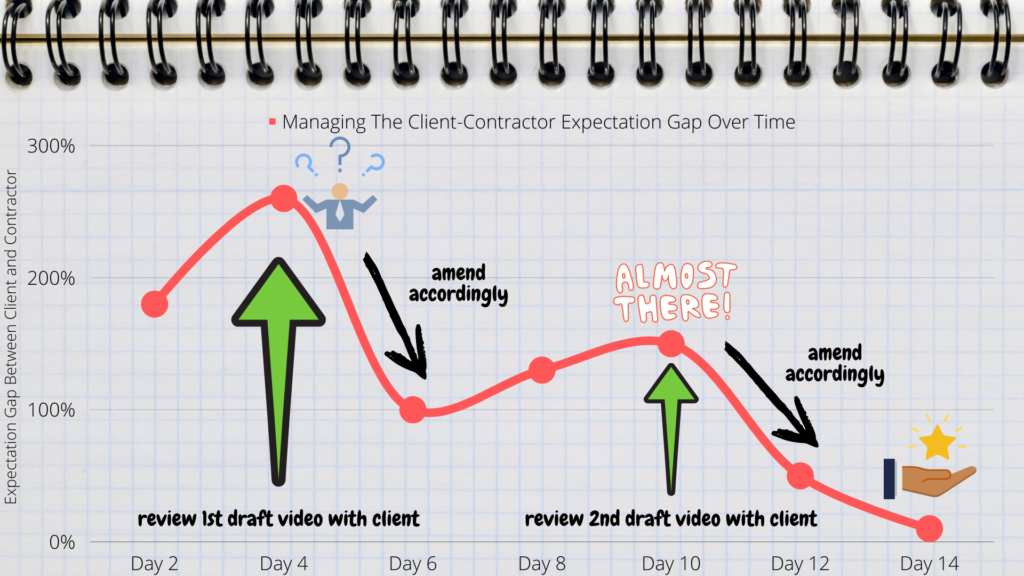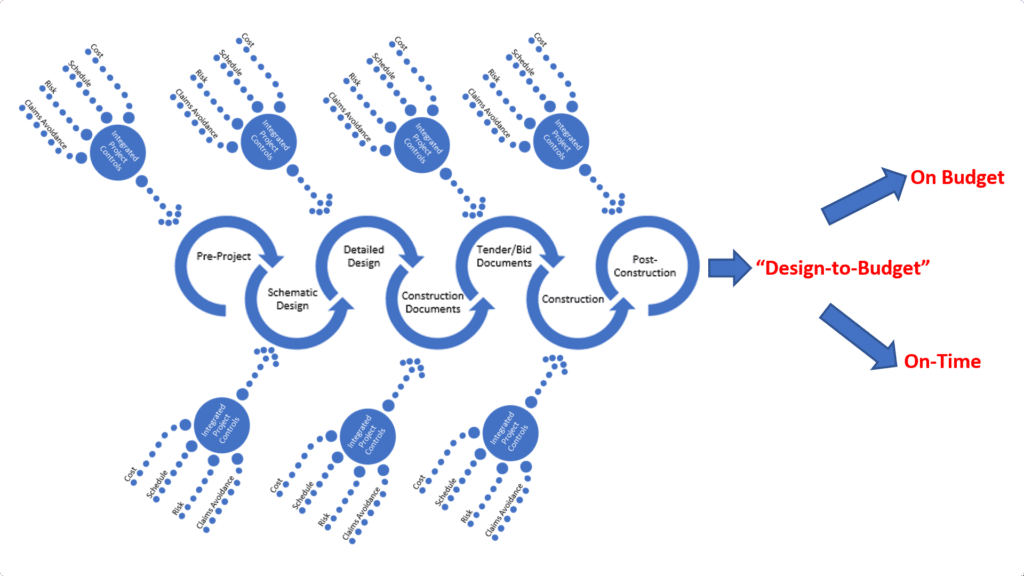It is often said that change is the only constant. Knowing that we can at least try to strive towards positive change.
Along those lines, we see one thing that most successful organizations have in common. They subscribe to the philosophy of continuous improvement. To them, making the AWP transition is simply taking the next step in their journey to excellence.
The what-transition, you say?
AWP or Advanced Work Packaging is an industry framework that focuses on planning with the end in mind. If you haven’t already, we recommend you read our previous blog posts on AWP Benefits and How to Implement AWP.
Today’s resource is dedicated to Project Professionals like you who are ready to make the AWP transition. As mentioned above, the journey is ripe with obstacles but worth it. And we are here to make sure your AWP transition makes as few detours as possible.
For that, we use the expert guidance of Chris Carson, Enterprise Director of Program & Project Controls at Arcadis U.S., and one of our instructors at Project Control Academy.
Watch the video below to see Chris share several lessons learned drawn from his and other veterans’ experience.
If you’re not one for watching videos, you know the drill. Simply read through our summary on Chris’s presentation below, with a few extra thoughts of our own thrown in.
Top 4 Mistakes To Avoid During Your AWP Transition
There are a hundred reasons why your organization’s AWP transition could end up in Neverland. These reasons could range the whole gamut of issues from people to processes.
Nobody likes information overload. Thankfully, that includes our SME for today, Chris. He has carefully identified the top four mistakes made by organizations during their AWP transition. That way, you can cut through the noise and unfamiliar jargon. You can narrow your focus on avoiding the most common issues, at least during your early-stage AWP transition.
So are you taking notes yet? Let’s learn together below:
1- Change Resistance To AWP Transition
There is a reason why the word “People” comes first in the popular corporate mantra “People, Processes, Tools”.
An organization may have the most optimized processes. They may even have access to the best tools money can buy. Yet without the support of their employees, organizations face an uphill battle when implementing major change.
My most vivid memory of change resistance came quite early on in my career. I was representing the Contractor, providing support to the Owner on one of their pilot project initiatives under a maintenance umbrella contract. The initiative required the Contractor to partially work within the Owner’s ERP systems. The overall aim was to improve cost management for the Owner’s organization.
At a follow-up meeting, the Project Lead for the initiative was presenting the implementation process flow. The Contract Holder for the maintenance umbrella contract seemed unhappy from the very beginning. Suddenly and without warning, he started screaming questions at the Project Lead. As traumatizing an experience as it was, one thing that stood out was the Project Manager’s response.
Although taken aback, the Project Lead calmly responded, “it’s in the process flow”. The Contract Holder, unsatisfied, continued screaming his questions. And each time the Project Lead would calmly give the same reply. Finally, the Contract Holder left the room in a huff.

Figure 1: It’s In The Process Flow
Now I hope you never encounter the same scenario above during your AWP transition. However, it pays to be prepared as you will most likely face some form of change resistance.
If your organization lacks a strong CPM-scheduling culture, expect to run into some change resistance. If your organization is used to working silos, definitely expect some change resistance.
You may also face opposition from Engineering saying they cannot plan anything because they do not have the full details. But as Chris mentions, for most team members it would not be their first time planning a project. Hence, they should be competent enough to provide some sort of early estimate.
2- Lack of Scope Freeze During AWP Transition
Providing an early estimate is important. However, the lack of scope freeze can be equally damaging to the AWP transition process. For this, Chris recommends using the Arcadis Stage-Gate process, as illustrated in Fig. 2 below. The Stage-Gate will help your organization design to the budget, resulting in projects that are within budget and on time.

Figure 2: Arcadis Integrated Project Controls / Design Stage-Gate Effort
Once, an existing client had given us an unusual assignment. We were asked to produce a gimmick video for a CPC (Certificate of Practical Completion) award ceremony. Apparently, we were the best fit for the job because we were in the digital construction space. But it was akin to asking a computer programmer how to resolve the faulty office printer. Indeed, creating a gimmick video was something new and foreign to us. But we did not want to disappoint our client, so we went ahead with it. We were given two weeks to produce the first draft.
So, we purchased a month’s subscription to Adobe Premiere Pro and Envato Elements and got to work. After the two weeks were up, we presented the first draft to our client. To say we got hammered was an understatement. Our video was not what our client expected at all. Suffice to say we left the meeting slightly shocked and ego slightly bruised.
My superior later sat down with me and drew out a graph of the client-contractor expectation gap over time. It looked a little bit like in Fig. 3 below. He explained that we could have avoided the mistake by presenting early drafts to the client and getting early feedback. By doing so, we could have continuously closed the gap between the clients and our expectations of the deliverables.

Figure 3: Client-Self Expectation Gap Over Time
Similarly, that is the driving principle behind the Design Stage-Gate approach in Fig. 4 below. We absolutely cannot expect to go from Pre-Project to Construction Documents without getting some form of validation from the clients. The phase-gate approach is simply formalizing the process.
For example, imagine a Contractor that hits the first phase gate after achieving 30 percent of documents complete. They proceed to provide the preliminary estimates of cost, schedule, risk, and claims avoidance to the Owner.
While reviewing the estimate, the Owner comes across a major item and thinks the building cost is too high. The Owner then requests a revision of the design. Now, on one hand, this may seem like a setback to the project team. But it is a manageable setback because the Contractor has validated the Owner’s expectations and has time to make revisions.

Figure 4: Check the Project Control Elements at Each Stage-Gate
Now imagine a contrasting scenario where formal phase-gating is not practiced. The Contractor realizes at 85 percent completion of documents that they aren’t going to be able to meet the budget. They drag their feet and finally highlight the cost bust to the Owner. Unsurprisingly, the Owner reacts angrily, feeling pushed into a corner and out of options this late in the project.
3- Late Design Deliverables During AWP Transition
But do you know what else could back your AWP transition into a corner? Late design deliverables. They are the bane of projects, whether the projects are AWP-process driven or not.
See, the AWP process is about planning with the end in mind. Remember the long-lead-time equipment example in our previous blog post on AWP implementation? Because of AWP, the design team could prioritize which engineering work packages to complete first.
But don’t expect AWP to bear much fruit if you can’t get that early alignment right between design and planning. In Chris’s own words, there cannot be a confrontational relationship between design and construction.
Your organization’s AWP transition may disrupt some of the existing processes. You may even see a dip in productivity before things get up to speed. But it is extremely important for Design and Engineering to be fully on-board with your AWP journey.
Or else, you may find yourself back at square one. Imagine going through all the effort to create an AWP-driven schedule. Only to find out that the Engineering team still does not believe in the schedule. They would rather follow their tried-and-true methods to achieve the deliverables.
Just when it seems like you have exhausted all your best efforts, there is an ace card to play. Because when all else fails, the contract does not.
4- Lack of Contractual Support During AWP Transition
That’s right, having the right amount of contractual support can make or break the success rate of your AWP transition.
Some organizations deride AWP contractual support as a strongman approach that forces organizations to adopt AWP. They may understandably be worried about the additional costs incurred to implement AWP. But if that’s what it takes to transform the industry, then AWP adoption becomes more a necessity than a choice.
Let’s take another industry process that is fairly new within the past two decades, Building Information Modelling (BIM). The benefits of BIM need no introduction to the project controls community, especially when it comes to 4D Planning. Yet we see some regions lagging behind others in terms of BIM implementation.
For example, the Public Works Department of one region in Southeast Asia recently launched a new BIM strategic plan. The key goal was to have 80% of major projects utilize BIM by the year 2025. Contrast that to the goals of their competitive neighbours, who had a similar plan. The only difference? The neighbours launched their strategic plan 15 years earlier, aiming for an 80% adoption rate by 2015.
Fast-forwarding to today and comparing the result of both policies: we see a noticeable gap between both regions’ BIM maturity levels. In the latter, BIM is so commonplace that BIM contract clauses are negotiated just like any other contract clause. Whereas in the former, stakeholders are still arguing whether clash analysis is enabled by Level of Development (LOD) 300 or LOD 400.
So don’t make the same mistake, do include contractual support during your AWP transition.
Owners, take the lead. Contractors, take the opportunity. Look beyond the short-term investment cost and focus on the long-term benefits to your organization.
Summing Up Your AWP Transition
And so it falls on you, AWP champion, to ensure your organization avoids the four costly mistakes above during its AWP transition.
“Wait, did you just call me an AWP champion?”
Yes, we did! And you deserve it for sticking it out with us since the first blog post on Advanced Work Packaging. Hurray!
Let’s quickly summarize below:
You may not be able to control change resistance towards your organization’s AWP transition. You can, however, anticipate and plan for such responses.
Implement a formal, stage-gate process to validate your deliverables at each major design stage. This way, you can continuously reduce the deliverable expectation gap between the Contractor and Owner.
Ensure the AWP-driven process is fully understood by all disciplines to mitigate the risk of late design deliverables.
And finally, to overcome that last bit of resistance, use contractual support to give the final push to AWP adoption.
With that, we hope this article provided you with critical guidance to help your organization succeed during its AWP transition.
If you still have doubts about AWP, let our next article decide for you!
References:
[ 1] Mutang Tagal, Bian. “The Top 6 Advanced Work Packaging Benefits That You May Not Have Heard About“.Project Control Academy, 08 Mar 2022.
[ 2] Mutang Tagal, Bian. “The Ultimate Checklist for Effective AWP Implementation In Your Organization“.Project Control Academy, 22 Mar 2022.
[ 3] Carson, Chris. “How You Can Efficiently Evolve From Project Scheduling To Implementing Advanced Work Packaging (AWP) With Ease”. Project Control Academy, 26 Mar 2021.
[4] Ghorbani, Shohreh. “How to Select The Best Project Controls Software“. Project Control Academy, 10 Aug 2019.
[5] Elgohari, Tamer. “4D Scheduling vs. Traditional Scheduling (Which one do you prefer?)“. Project Control Academy, 28 Oct 2019.
About the Author:

Bian comes from a conventional Planning & Scheduling background and is also a trainer with technical capabilities in 4D BIM Planning and Advanced Drone Photogrammetry. He is currently consulting for several key infrastructure projects such as the Pan Borneo Highway project in Sarawak under PCSS Consultancy Sdn Bhd and has worked in the oil & gas industry developing maintenance schedules for a major oil and gas operator.
He holds a Bachelor of Science (BSc.) in Petroleum Engineering from The University of Texas at Austin. Bian was an invited speaker for The Institution of Engineering and Technology (IET) Evening Talk 2020.


















